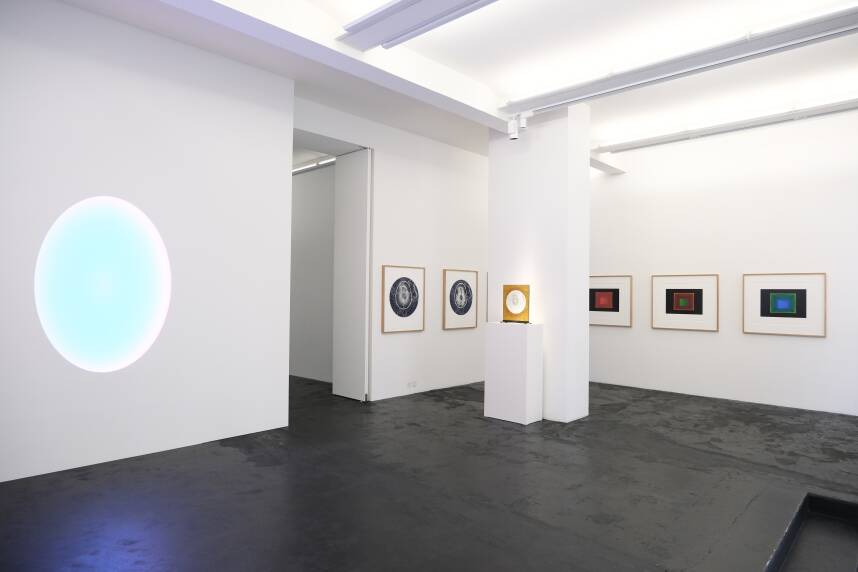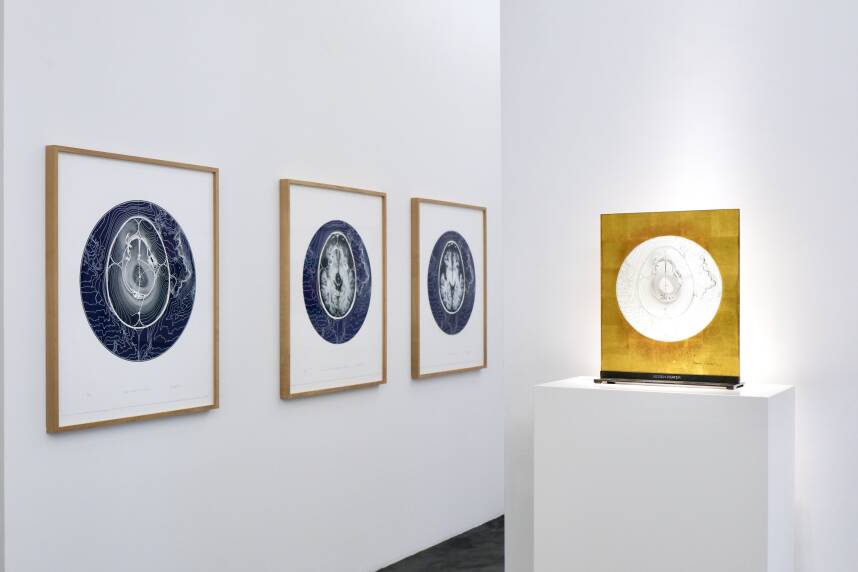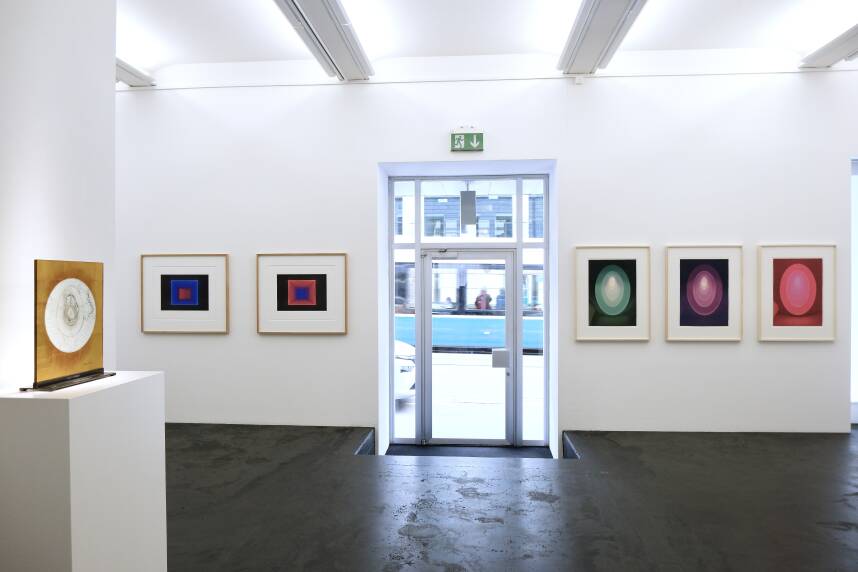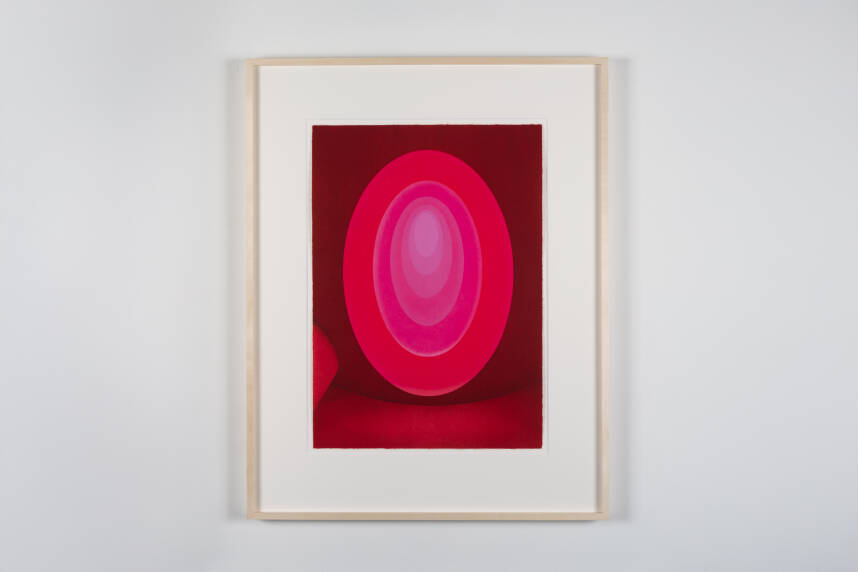As one of the most important living artists, James Turrell’s work has its origins in the mid-20th century, an era of profound social, technological, and scientific transformation. In contemporary art, the departure from illusionistic representation opened new modes of expression that incorporated the viewer’s actual environment. Movements such as Minimalism, Conceptual Art, and the Light & Space Movement emerged, exploring new sensorial experiences inspired by Southern California’s unique light and the technological innovations of the aerospace industry in the 1960s. In Turrell’s work, the most fundamental elements of human existence — light and space — become artistic materials, and perception itself becomes the medium. This is evident in his pioneering «Projection Pieces» (1966–69), in which «shaped» light, projected into a corner or onto a flat wall using quartz halogen projectors, creates the illusion of a physically present object. The sculptural quality of light explored in this early series is later reflected on paper in the four-part work «Squat, June, Carn, Alta» (1990), which is included in our exhibition.
With the Wedgework Series (from 1969 onward), Turrell pursued his investigation into the deeply rooted structures of visual perception with unwavering consistency. By positioning a wedge-shaped partition within a room and installing a fluorescent light source at a corresponding angle on the opposite side, the emitted light appears to form a transparent wall. The materialization of space through atmospheric light — coupled with the realization that, in reality, «nothing» is physically there — results in a profoundly spiritual experience. At the boundary between illusion and reality, between dream and consciousness, Turrell defines art as a space in which the self becomes aware of itself. Light, in this context, no longer appears self-evident but rather as something unfamiliar, a material whose nature must be discovered through seeing and experiencing. Turrell uses the malleability of light as a material to confront viewers with the limits and possibilities of their own perception. While works from the Wedgework Series have so far been experienced as large-scale light installations, we are pleased to present, for the first time and exclusively, this type of work as large-format pieces on paper. These limited-edition prints, created in 2025, reference different moments within a light installation and reflect the artist’s openness to new technologies. Whereas early Wedgework installations were made with neon, producing «static» light, newer LED technologies allow for slowly shifting color transitions. These dynamics are captured in the works on paper, whose masterfully rendered color gradients represent the highest quality of inkjet printing. The result offers an intimate approach to this historically significant body of work.
For Turrell, light is the substance from which space itself is made, something he seeks to make not only visible but tangible through his work. To give light a physical presence is, for him, to make viewers part of it. Thus, the boundary dissolves between the light that fills and appears in dreams — a light familiar to Turrell since his childhood in a Quaker family — and the light in which we live and move. To open oneself to light ultimately means to become one with it. This aspiration finds its most consistent realization in Turrell’s monumental life’s work, Roden Crater (begun in 1977). In this project, the artist transforms an extinct volcano in Arizona’s Painted Desert into an observatory where natural light phenomena and celestial movements become part of an architectural experience of perception. While the intervention in the surrounding landscape is minimal, upon completion the volcano’s interior will contain 24 perception spaces and six tunnels, inviting visitors to sensually experience various geological and natural times. Over the years, numerous artworks have emerged from this project, each exploring different aspects of Roden Crater. We are pleased to present the newest works from 2025 as part of our exhibition, thereby paying tribute to one of the most significant achievements of Land Art. Using the elaborate technique of photogravure — a photomechanical intaglio process in which a photographic image is transferred to a copper plate via a light-sensitive layer and etched for printing — three distinct prints have been created. These works depict the layout and construction progress of Roden Crater and, through the overlay of the artist’s brain scan, reflect his profound intellectual and emotional connection to his life’s work.
Since James Turrell’s first light works in the mid-1960s, our perception of light, image, and space has changed dramatically, shaped by digitalization and the resulting acceleration of visual culture toward the end of the 20th century. Turrell’s art counters this development through a deliberate slowing down, reminding us of the immediacy of seeing and the deep connection between perception, body, and space. Featuring a selection of works on paper — including the iconic woodcut series Suite from «Aten Reign» (2015) — and two immersive light installations, the Small Elliptical Glass «First Cause» (2024) and the Tall Glass «Singularity» (2024), the exhibition highlights central bodies of work from Turrell’s decades-long career. Few artists have managed, as Turrell has, to elude fleeting classifications and create a radical oeuvre that extends beyond the visible, rendering human existence itself as an interplay of light, space, and perception.
(Susanne Kirchner)














